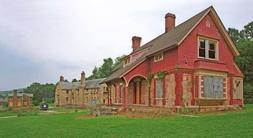 Click image to enlarge.
Click image to enlarge.
 Click image to enlarge. Click image to enlarge. For more than forty years, four of Anniston’s finest landmarks have been dodging the wrecker’s ball. The city school board has long wanted to redevelop the site where the houses of Noble Park (Crowan Cottage and the Hamilton, Johnston, and Noble-Acker houses) are located. Unable to build an educational campus on the site, the school board is now offering the buildings to the highest bidder. This site just happens to be located on one of the few remaining large tracts in the city with no preservation ordinance to protect the buildings. As a result, anything could happen to them.
0 Comments
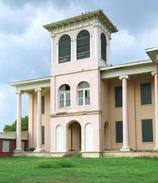 Click image to enlarge. Click image to enlarge. In 1936, one of America's leading photographers, Walker Evans, happened upon a magnificent plantation house that stood proudly despite the clutter of its current occupant, The Tuscaloosa Wrecking Company. Reflecting not only the state of depression-era America, Evan’s well-known photograph seemed to capture the story of many historic buildings: regardless of how significant they may be, their fortunes fluctuate over time. 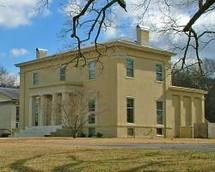 Click image to enlarge. Click image to enlarge. Oak Place is a Greek Revival house that was designed by George Steele in 1840 and later recorded by the Historic American Building Survey in 1934. In 1977 the East Huntsville Baptist Church wanted to tear it down to build a new worship center. Thanks to skillful encouragement by the Historic Huntsville Foundation, the congregation renovated it and performed the necessary steps to list it on the National Register of Historic Places. 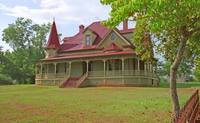 Click image to enlarge. Click image to enlarge. The Lewis Young House in Dadeville is one of those buildings one cannot help but notice. With its sweeping porch, corner turret capped by a “witch’s hat,” and high red roof punctuated by gables and dormers, the house is a show-stopper, displaying all the rich and varied design features typical of American Victorian architecture. Locals call it “the red roof house,” their treasured landmark. But even such local acclaim does not guarantee preservation. 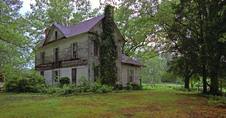 Click image to enlarge. Click image to enlarge. Alabama's oldest houses are rapidly vanishing. Built as homes for our early pioneers, many are located in rural areas and are abandoned and deteriorating. Their remote locations make finding the right homeowner particularly challenging and often preclude adapting them for other uses. So goes the story of the John Ash house, home of Ashville’s founder and one of the oldest surviving buildings in St. Clair County. Although widely recognized as a local landmark, the house now sits vacant with no plan or funds to restore it. |
Alabama's Endangered Historic LandmarksEach year since 1994, Alabama Heritage has highlighted threatened historic sites throughout Alabama. The “Places in Peril” list has identified more than 215 imperiled historic resources throughout the state, and is compiled by the Alabama Historical Commission and the Alabama Trust for Historic Preservation. The locations highlight the results of deferred maintenance, perceived obsolescence, development pressures, and lack of funding—forces that now more than ever threaten our cultural legacy. But awareness is a powerful force, too, and can cultivate a renewed determination to be responsible stewards of our heritage. For more information, visit the AHC or the ATHP websites. Alabama Heritage is proud to bring to you a selection of the places designated as perilous. Please keep your comments to information relevant to the featured place in peril. Alabama Heritage reserves the right to delete any comment that we deem inappropriate. Archives
May 2024
|
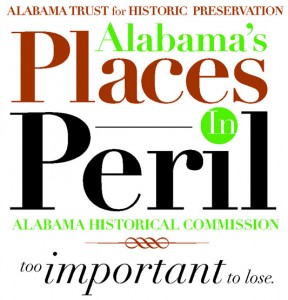
 RSS Feed
RSS Feed